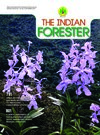Linking Taxonomy and Conservation
DOI:
https://doi.org/10.36808/if/2018/v144i9/116566Keywords:
Combined Taxonomic and Conservation Priority, Conservation Taxonomic Unit, Operational Taxonomic Unit, DNA Barcoding, Link.Abstract
Both taxonomists and conservationists face challenge in their respective areas of work. There is no knowledge about a huge number of species. The Taxonomic Impediment has been defined in the Darwin Declaration in the Global Taxonomic Initiative. The Taxonomic Impediment has been considered central to the conservation/taxonomic problem. The impediment is defined as: “The gaps in knowledge of taxonomic systems, and the reduced impact by not using such knowledge in the management and sustainable use of biodiversity.†Conservationists have to work on population or individuals, though they practice habitat conservation as well. Conservationists need taxonomic information in a way that can be used for conservation. It has been hypothesized that Conservation Effort (x) is a function of number of species (n) expressed as f (x) = x n the combined taxonomic and conservation priority is inversely proportional to population size. This could be one way to link taxonomy and conservation.References
Airamé S., Jenifer E. D., Kevin D. L., Heather L., Deborah A. M. and Robert R. W. (2003). Applying ecological criteria to marine reserve design: a case study from the California channel Islands. Ecological Applications, 13(1): S170-S184 .Supplement. The Science of Marine Reserves .
Bebber D.P., Marriott F.H.C., Gaston K.J., Harris S.A. and Scotland R.W. (2007). Predicting unknown species numbers using discovery curves. Proceedings of the Royal Society, 274: 1651-1658.
Blaxter M., Mann J., Chapman T., Thomas F., Whitton C., Floyd R. and Adebe E. (2005). Defining operational taxonomic units using DNA barcode data. Philosophical Transactions of Royal Society of London. B. Biological Sciences, 360: 1935-1943.
Ciofi C., Beaumont M., Swingland I. and Bruford M. (1999). Genetic divergence and units for conservation in Komodo dragon Varanus komodoensis. Proceedings of the Royal Society B Biological Sciences, 266: 2269-2274
Cracraft J., Feinstein J., Vaughn J. and Helm-Bychowski K. (1998). Sorting out tigers (Panthera tigris): mitochondrial sequences, nuclear inserts, systematics and conservation genetics. Animal Conservation, 1: 139-150.
Eggert L.S., Rasner C.A. and Woodruff D.S. (2002). The evolution and phylogeography of the African elephant inferred from mitochondrial DNA Sequence and nuclear microsatellite markers, Proceedings of Royal Society London B, 269: 1993-2006.
Fattorini S. and Borges P.A.V. (2012). Species-area relationships underestimate extinction rates. Acta Oecologica, 40: 27-30.
Garnett S.T. and Christidis L.(2017). Taxonomy anarchy hampers conservation. Nature, 546: 25-27.
Gippoliti, S and Amori G.(2007). The problem of subspecies and biased taxonomy in conservation lists : the case of mammals. Folia Zoologica, 56(2): 113-117.
Hamad I., Delaporte E., Raoult D. and Bittar F. (2014). Detection of Termites and other insects consumed by African Great Apes using molecular fecal analysis. Scientific Reports, 4 (4478): 1-9.
Hey J. (2001). Genes, categories and species: the evolutionary and cognitive causes of the species problem. Oxford University Press, Oxford.
Kormos R., Bosch C., Bakarr M.I. and Butynski T.M. (2003). Western African Chimpanzee status survey and conservation action plan. IUCN/SSC Primate Specialist Group, Gland, Switzerland.
Kremen C., Niles J.O., Dalton M.G., Daily G.C., Ehrlich P.R., Fay P.J., Grewal D. and Guillery R.P. (2000). Economic incentives for rain forest conservation across scales. Sciences, 288: 1828-1831.
Lidicker W.Z. (2015). Mammalian conservation : scientific frontiers and socio-political pitfalls. Therya, 6(1): 1-10.
Mace G. (2004).The role of taxonomy in species conservation. Philosophical Transactions of the Royal Society of London B, 359 : 711–719
Meegan R.P. and Moehr D.S. (2002). Landscape conservation and regional planning for the Florida Panther. Southwestern naturalist, 1(3): 217-232.
Mora C., Tittensor D.P, Adl S., Simpson A.G.B. and Worm B. (2011). How Many Species Are There on Earth and in the Ocean? PLoS Biology, 9 (8): e1001- 1127.
Pardini R., Souza S.M., Braga-Neto S. and Metzger J.P. (2005). The role of forest structure, fragment size, and corrridors in maintaining small mammal abundance and diversity in an Atlantic forest landscape. Biological Conservation, 124(2): 253- 266.
Reed D.H., JO'Grady J., Brook B.W., Ballou J.D. and Frankhan R. (2003). Estimates of minimum viable population sizes for vertebrates and factors influencing those estimates. Biological Conservation, 113(1): 23-34.
Roca A.L., Geogiadis N., Pecon-Slattery J. and O'Brien S. J. (2001).Genetic evidence for two species of elephants in Africa . Science, 293: 1473-1477.
Ross S.T. (2001). Inland fishes of Mississippi. Jackson, MS: University Press of Mississippi, Jackson, MS. 624 pp.
Rosset, V., Ruhi, A., Bogan, M.T. and Datry, T. (2017). Do lentic and lotic communities respond similarly to drying ? Ecosphere, 8(7) : 1-14.
Southall B.L., Bowles A.E., Ellison W.T, Finneran J.J. and Gentry R.L. (2007) Marine mammal noise exposure criteria: initial scientific recommendations. Aquatic Mammals, 33: 411–522.
Taylor A.B. and Groves C.P. (2003). Patterns of mandibular variation in Pan and Gorilla and implications for African Ape taxonomy. J, Human Evolution, 44: 529-561.
Tyack, P.L., Zimmer W.M.X., Moretti, D., Southall, B.L., Claridge, D.E. and Durban, J.W. (2011). Beaked Whales Respond to Simulated and Actual Navy Sonar. PLoS ONE, 6(3): e17009. <https://doi.org/10.1371/journal.pone.0017009>
Downloads
Downloads
Published
How to Cite
Issue
Section
License
Unless otherwise stated, copyright or similar rights in all materials presented on the site, including graphical images, are owned by Indian Forester.





